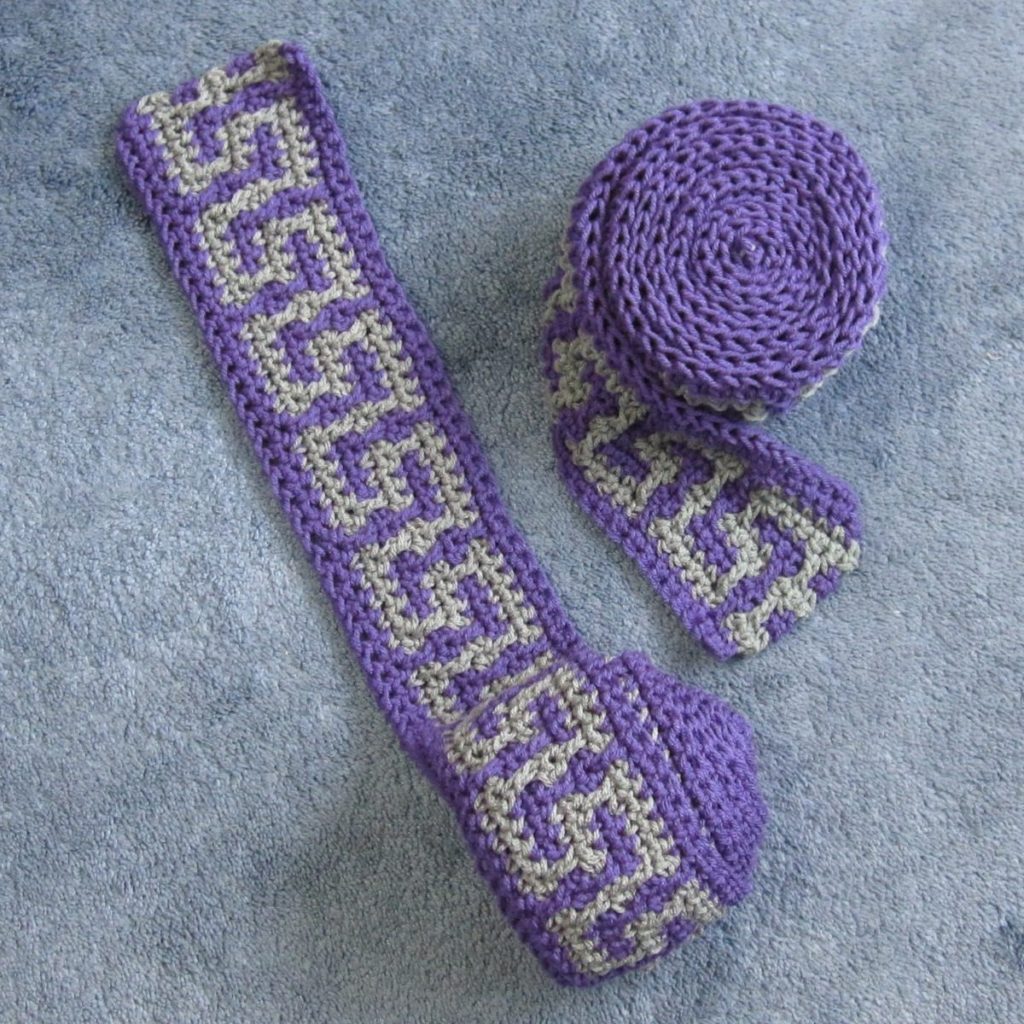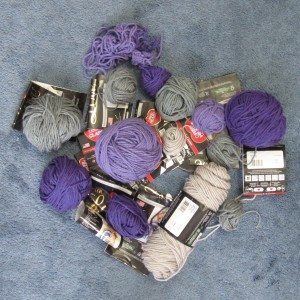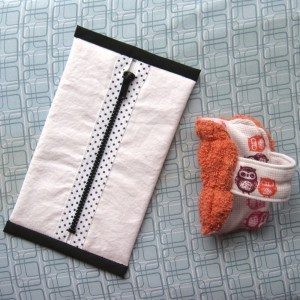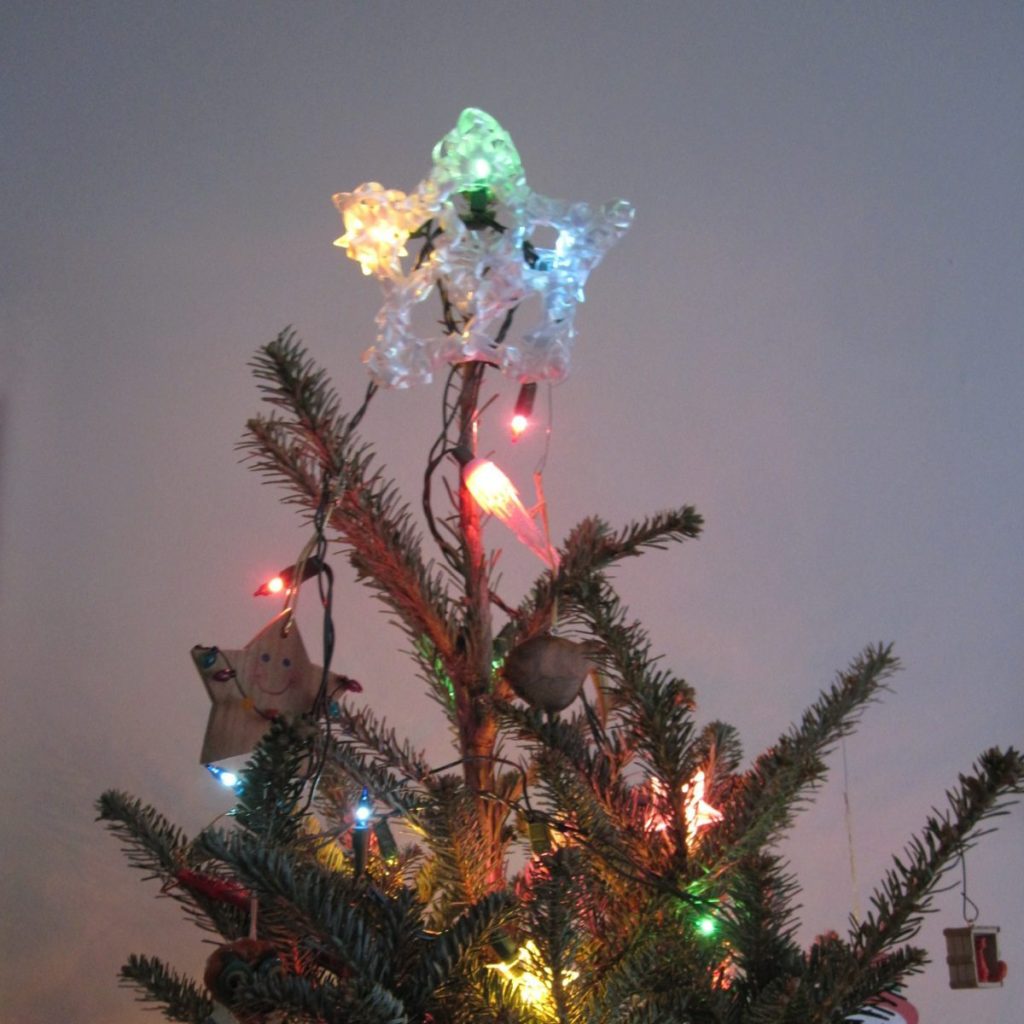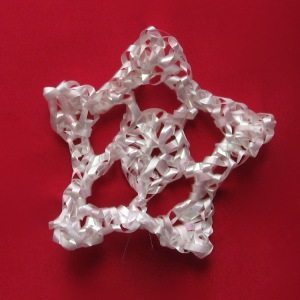We’ve reached the next installment of the mystery afghan series. After the joining was done I checked the size. Big enough for our queen size bed? The answer was almost but not quite, and I had the solution on deck: a Greek Key patterned throw from Red Heart. I originally thought I’d do this in black and dark purple, but realized that would detract from the stained glass effect of the black joins. Since I had the most dark purple and dark gray leftover (albeit not quite enough gray, as it turned out), I did it in those colors and joined it with black.
Instead of a long foundation chain followed by a row of single crochet, I made 213 foundation single crochets to start. Otherwise I followed the pattern, save fixing one typo: In row 9, just before “repeat from * across” it says to dc 3 rows down and skip the next sc. In between those two instructions it should have you chain 2 (in place of the sc you’re skipping).
The pattern calls for you to chain 2 whenever you’re skipping 1 stitch. If I were starting over I would only chain 1. It’s likely the designer’s chains are tighter than mine and a single one puckered unattractively, but in my tension the two chains spread and make the key pattern serif instead of sans-serif, so to speak.
I made the second panel twice. The first time I joined all my leftover gray and still ran out with one long row left. Instead of continuing from that point with new gray yarn and a dozen tails to deal with, I decided to pull it out, and when I got back to the beginning purple I realized I’d joined that in the second row as well! Must have cut out a knot or frayed area. Anyway at that point it seemed worthwhile to start completely over. Once I got the new skein of gray I realized why I’d run out: it wasn’t enough for the panel! Barely – I ran out with maybe 10 stitches left – but man, that’s a yarn eater. I pulled back to the start of the row so the tails would be at the edge and used some of the previous leftovers to finish. Unfortunately the new skein was a vastly different dyelot than the previous, but in the not terribly bright light of the bedroom, hanging off the edge of the bed, it should be fine.
Since I’m down to just the border, here’s my leftover non-black yarn (plus all the ball bands, minus one small ball of light gray which hid in the bag). This is the remainder from 5 dark gray (Red Heart Classic Nickel), 3 light gray (RHC Silver), 5 light purple (RH With Love Lilac, double-sized skeins), and 4 dark purple (RHWL Violet, ditto). The pattern called for 3, 2, 9, and 7 single-size skeins of each color, respectively, so I used less than one additional skein of each color (not counting the extra gray for the extra panels).
In fact, if I’d omitted the extra panels and done the joins and border in two different colors, I believe I could have squeezed them out of the remaining yarn as well. That’s rather amazing because my afghan came out a third again the size predicted – the squares that said they would be 9″ came out 12″ – and I did not buy a third again the called-for yarn. My work must have much more extra air space than extra yarn.
I’ve begun the border but it is slow. I’ve now been working on this afghan fairly steadily for nearly seven months, though, so what’s another one or two?
